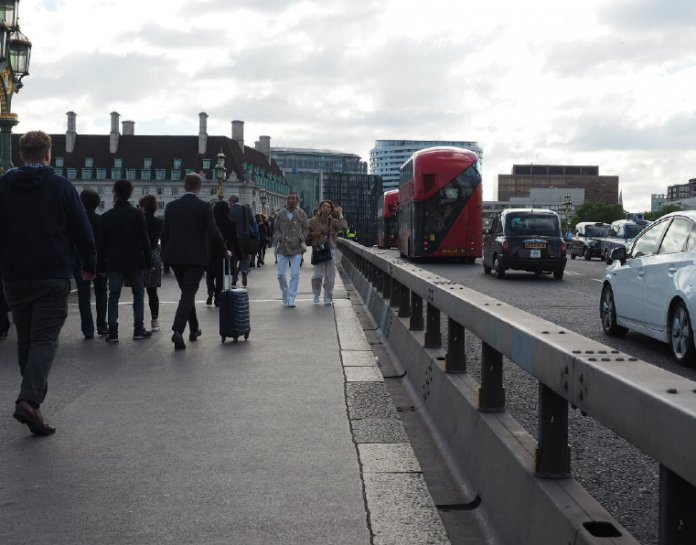John Wright, Global Director of Public Safety & Justice at Unisys shares his thoughts on how UK government policy helps to provide a comprehensive response to the country’s national security
First of all, on the plans for MI5 to declassify and share information on UK citizens suspected of having terrorist sympathies in a bid to prevent terrorist plots, we know that the launch of the government’s revised counter-terrorism strategy, Counter-terrorism
strategy (CONTEST) 2018 supports this. As the National Coordinator of Prevent for six years, the police lead responsible for CONTEST 2013, John Wright, now Global Director Public Safety & Justice at Unisys is very well placed to share his thoughts on this important
policy development and its background.
John begins by explaining that when it comes to UK citizens suspected of having terrorist sympathies, this must be dealt with in the most appropriate way that is commensurate with the threat posed. A proper assessment of that threat should take place, based on a wide range of information and data. There are caveats around this, in that such activities must comply with the relevant legislation around data protection and human rights, for example.
John explains that the new counter-terrorism strategy (CONTEST) 2018 is a consolidation of CONTEST 2013 and as such, the security services and agencies are looking to extend what has already been done, albeit in a more limited capacity. John details this crucial point to us further, in his own words.
“Most of this information is needed for a variety of reasons, including the way the information is collected, who provides it (it could be data that has been collected
by other agencies outside of the UK). There is a whole range of factors whereby that information will in most cases, need to be kept on a ‘need to know basis’. This has changed since the development of the Prevent strand of CONTEST that goes back to its very
conception. In this vein, getting ahead of the terrorist organisations and individuals in groups was always one of the primary motives.
“Since 2001, the focus has really been on arresting ourselves out of this issue around terrorism and I think as the strategy evolves, we have learnt lessons from actual events themselves but also around the way different partners and agencies react. Elsewhere in the world, there is a greater realisation that the security agencies can only deal with the very highest levels of threat. There has been a great rump of people who have been involved in investigations but are only on the periphery or are likely to become involved in investigations where the resources are not there and not likely to be in the future.
“These agencies are probably not the right people to deal with radicalisation processes, but they can identify the threat and the drivers. When it comes to remediation, that is diverting people from potentially committing a terrorist act, this is not within the skillsets of the
agency. So, if you are going to have your arms around all of this threat, you need to bring in other agencies who have the expertise and the resources to actually manage these threats.”
John then tells us that (CONTEST) 2018 has introduced a new category which is called ‘closed’ or ‘closing’ subjects of interest, which means that once the risk has been assessed, they are closed down as a threat or they are seeking to close them down. It is about maintaining an understanding that these groups do not resurface or become a threat in the future, but also that such investigations carry on in a way that is not down the traditional surveillance route.
On the counter-terrorism strategy (CONTEST) 2018, John is keen to explain what this aims to do. Building on CONTEST 2013, it is a very comprehensive and well thought through strategy, John notes. This is true when you consider how this strategy has been implemented in the UK and abroad. Over the last two or three years, lessons have been learned from terrorist incidents, especially in the UK as well as abroad.
“The aim is to incorporate these areas into (CONTEST) 2018 and provide a holistic approach, but that would suggest that nothing dramatic has changed. Having said that, I think that there are some elements within the strategy that show us two things. The first is the recognition that the threat has changed and evolved and secondly, this comprehensive approach focuses even more on prevention. Thirdly, there is more information here that deals with national security that can be made available to the broader partnership and
the public.
“So, from these, I would pick out three elements. The first is that there is a change in emphasis and a willingness to for us to be more open, in that the strategy does recognise in terms of the evolution of the threat, for example, the impact of ISIL in Syria wasn’t anticipated to the level in which it manifested itself. That was a recognition that the UK government’s assessment of a threat is never going to be perfect and was less pre-emptive and predictive.”
When it comes to John’s time the National Coordinator of Prevent for six years, the police lead responsible for CONTEST 2013, he reveals that setting up a review of this is a major piece of work for the National Counter Terrorism Security Office in close liaison with the Prime Minister’s Office, 10 Downing Street. John notes that this is a very sensitive engagement, with much planning and preparation involved and a great deal of information gathered. In addition, various different agencies are asked to have their input into the review of CONTEST 2013.
“For example, I was responsible for the section on the police’s contribution and there was also a section about the police’s overall response in terms of CONTEST 2013. It was my responsibility to carry out this work within the Counter Terrorism Policing, in that we provided a comprehensive response that fitted in with the overall structure of CONTEST 2013.
“In terms of how that worked, when the last CONTEST 2013 was updated the UK government were looking for examples of what went well and what didn’t, but crucially it concerns the types of initiatives and interventions that we thought would be most effective in terms of taking (CONTEST) 2018 forward. Much of this work involves going around the Counter Terrorism Policing network, speaking to professionals there and within the partnerships at a local level to pull out the things that frustrated them and what they wanted to change and update.
“(CONTEST) 2018, therefore, provides the opportunity to do things differently. For example, intelligence operations around national security are led by MI5 – The
Security Service who are a premier agency in terms of major threats to national security, but a lot of the interventions were led by the police. There was a recognition that not all investigations would have a be covered by the resources of MI5, so the intention was not to
replicate but do provide a similar level of management for an incident or operation, in relation to a lower threat investigation.”
John explains that when it comes to terrorist groups such as domestic right-wing extremists, the capabilities of law enforcement are different and can reach into communities. The Counter Terrorism Internet Referral Unit is another example of a very police-led response to challenging extremist views on the internet and to take down such sites if necessary, John reveals, hopefully, before any real attempts are made to radicalise or influence anybody in a negative way.
In closing, John also underlines that the UK is recognised as a leader in Europe and globally in how to provide a comprehensive response to national security. “CONTEST really does recognise the level of capabilities, but the evolution of the strategy does really reflect
how the UK itself is evolving on the national scene. If you look at how the UK ranks a threat, one interesting element is that while ISIL is still a number one threat. At one time, many people thought that Al-Qaeda was no longer the threat it once was. So, I do think there is a recognition in CONTEST that this threat may increase significantly over the coming years.
“Ensuring that the threat is properly covered, by learning lessons in terms of, for example, Syria wasn’t as well anticipated as it could have been. On the threat of Tahrir al-Sham (HTS) in Syria, if things move forward politically there and such organisations are marginalised then the focus moves away from internal struggles there to the UK and Western Europe. The message to convey here is, therefore, one of vigilance.”
John Wright
Global Director of Public Safety & Justice
Unisys
www.unisys.com











